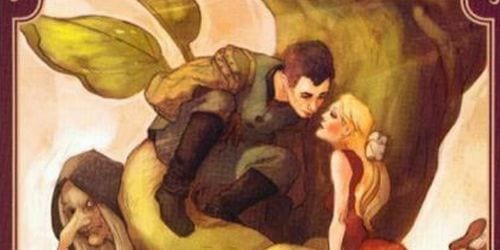
This collection of short stories represents a genre within a genre. The ‘re-told’ tale has been with us for some time; offering a different perspective on familiar folklore. The framework is often employed as a means to question depictions that conform to certain prejudices; usually those based along gender lines. The late Angela Carter is probably the most notable exponent, with her short story collection The Bloody Chamber (1979) that includes ‘The Company of Wolves’, adapted into a successful film version in 1984.
In this collection many writers follow Carter’s lead and explain the archetypes and mythic characters as existing in different contexts. Neil Gaiman’s ‘The Troll Bridge’ (a re-telling of the ‘Three Billy Goats Gruff’) is probably amongst the most successful. The Troll haunts the boy as he turns into a man and preys upon him, wanting to ‘eat his soul’. What that actually entails does not become clear until the eerily appropriate end.
Gaiman describes the feelings of his young male protagonist within the structure of the story: ‘It is not that I was credulous, simply that I believed in all things dark and dangerous. It was part of my young creed that the night was full of ghosts and witches, hungry and flapping and dressed completely in black.’ (342) This is probably the clearest summary of what these stories do and why they operate on the levels they do across cultures and time.
Belief is not the same as credulity. We know something is not necessarily true but we cannot help the sensations, especially when we are young, of feeling something is out there in the dark and the unknown. We need to, collectively, give such things a name and a location. If they are going to inhabit our psyches, we need to own them.
Most of the stories in this collection deal with just such positioning for young and sometimes childish and naïve characters. These are tales of coming-of-age and acquiring self-knowledge and many are entertaining and satisfying. Where there is sometimes a patchy quality is in the editing. There are numerous typos for one thing, and also a distinct inconsistency when it comes to the editorial introductions for each story.
Some authors who contributed pieces have clearly written them for something else and so there is a sense of shoehorning them into this collection. Gregory Maguire’s contribution is one such disappointment, and coming from the author of Wicked this is particularly so. It comes in the form of a script elaborating on the relationship between the Seven Dwarves and Snow White. It is not poor quality, just an oddity, and does not really sit well within such a publication.
Invention is certainly not lacking, and sinister, thought-provoking work is never more than a few pages away. But such a collection highlights the inconsistencies across the form. Some writers are more traditional than others, some reach the heights of literary excellence exhibited by Angela Carter in her heyday, but some are rather too derivative of the simplicity of the alternative narrative. Just what the point of view of the wolf or the wicked witch has to offer further is very much open to question.
The point of the folkloric form and the genre as a whole is that it provides an exploration of innocence into knowledge and youth into age, contrasting those perspectives. The villains, baddies and predators are depicted in supernatural form because they are meant to be precisely de-personalised and inhuman in order to offer moral directness that can be understood by children. By trying to flesh out their roles and make them more human, you kind of lose the point of such stories, and might as well be writing in another form.

![Call for Papers: All Things Reconsidered [MUSIC] May-August 2024](https://www.popmatters.com/wp-content/uploads/2024/04/all-things-reconsidered-call-music-may-2024-720x380.jpg)



